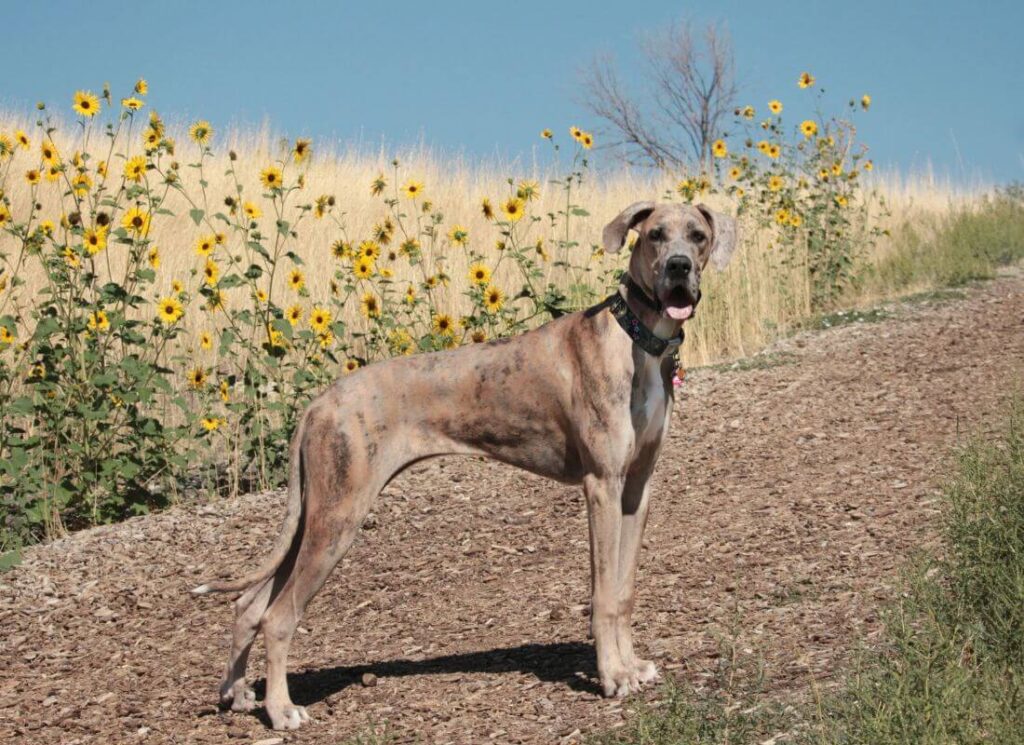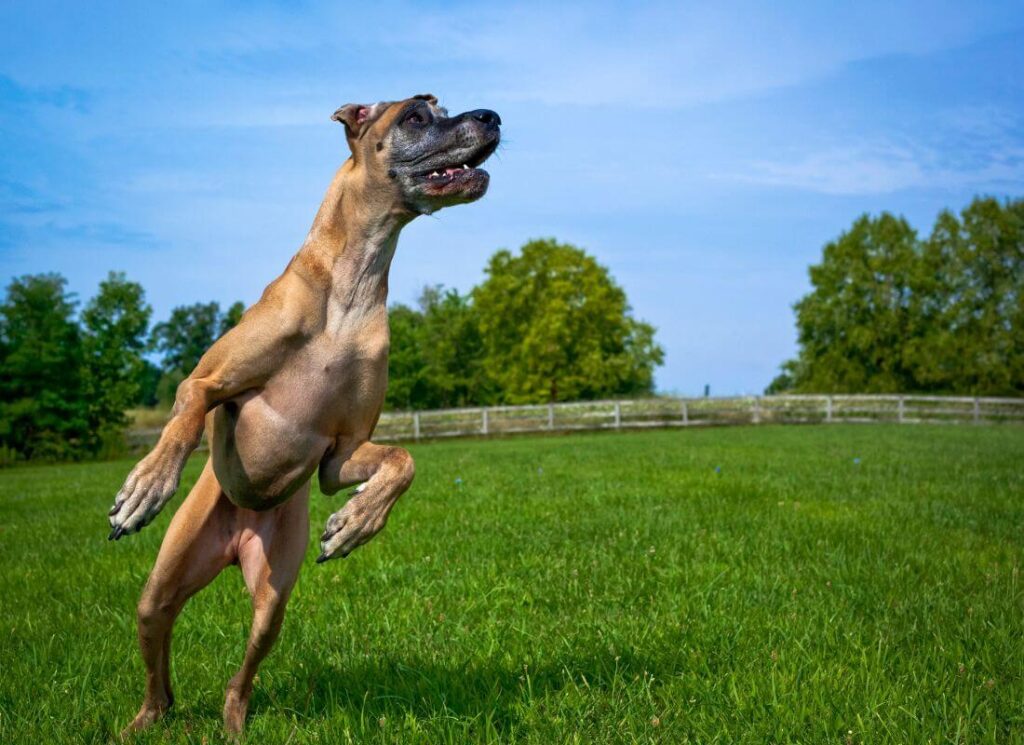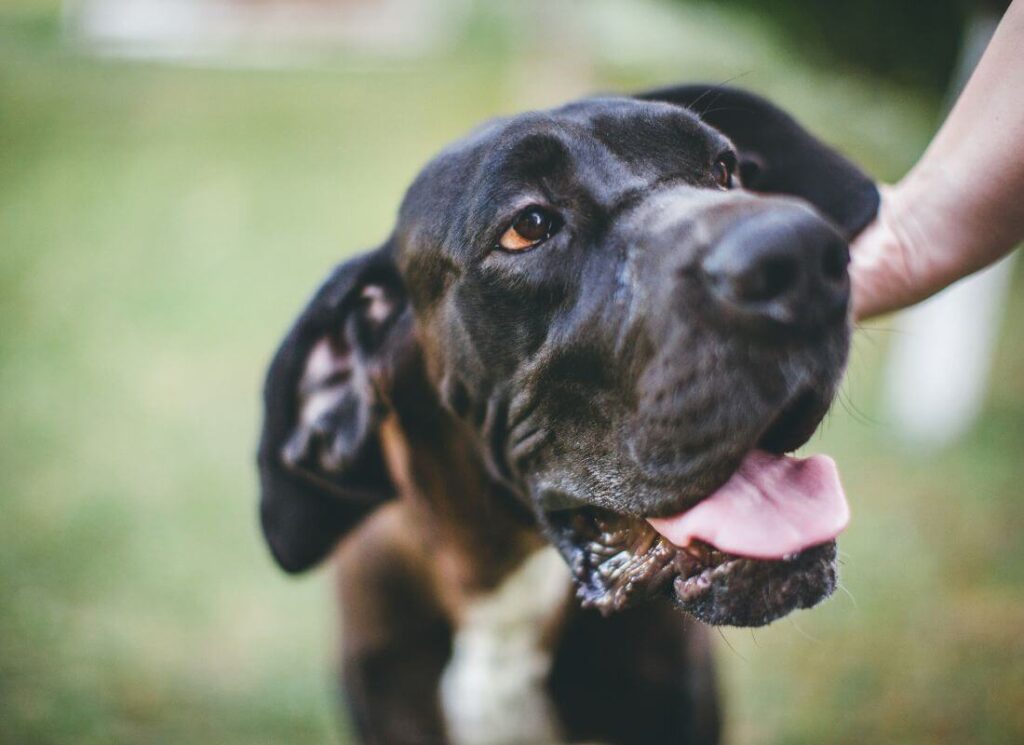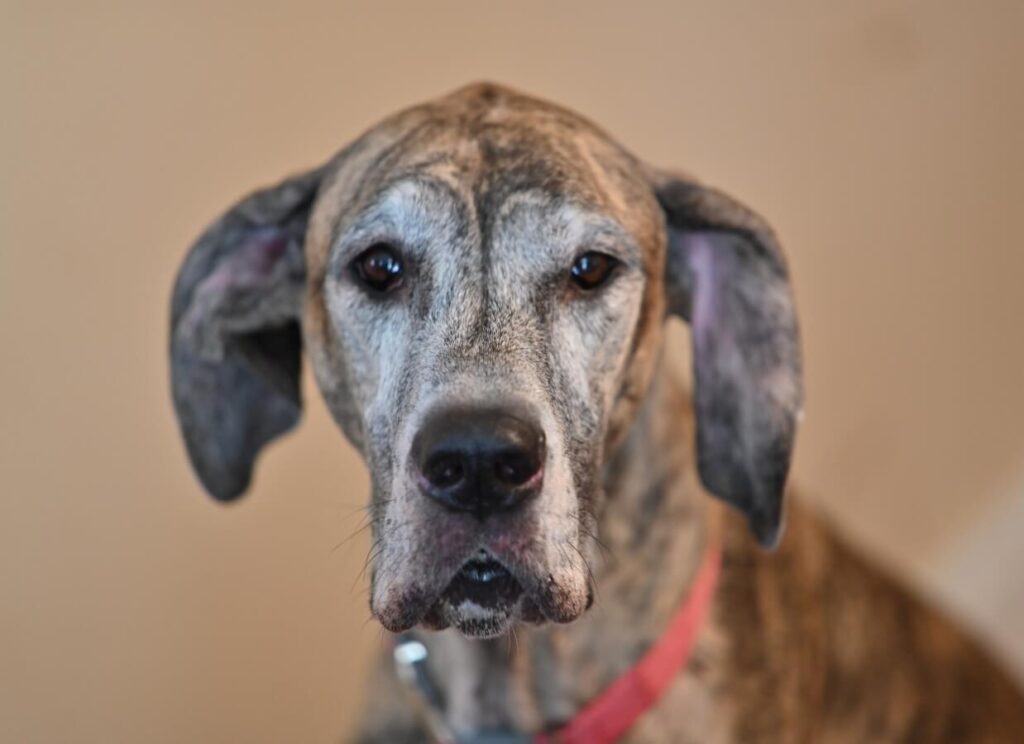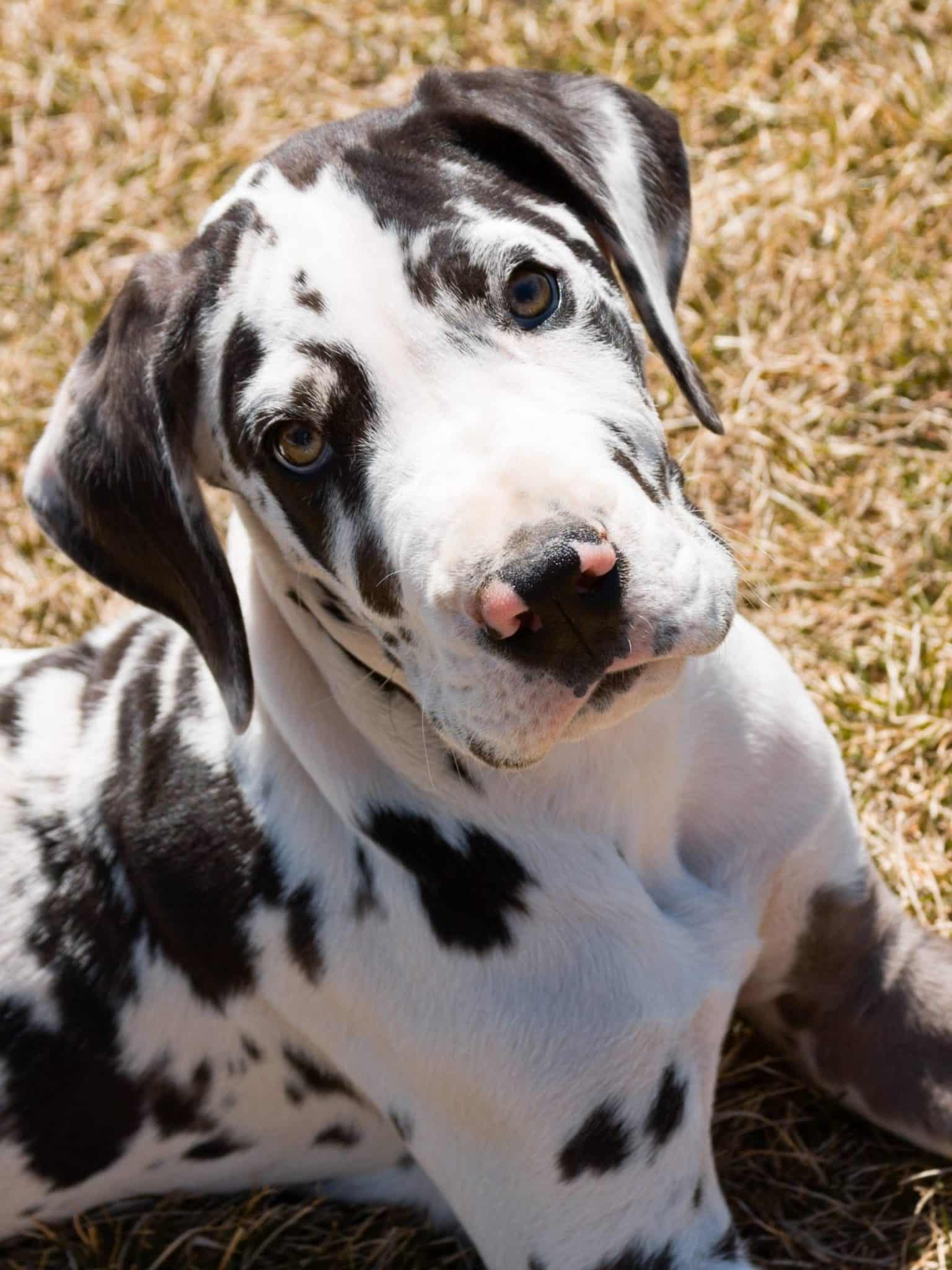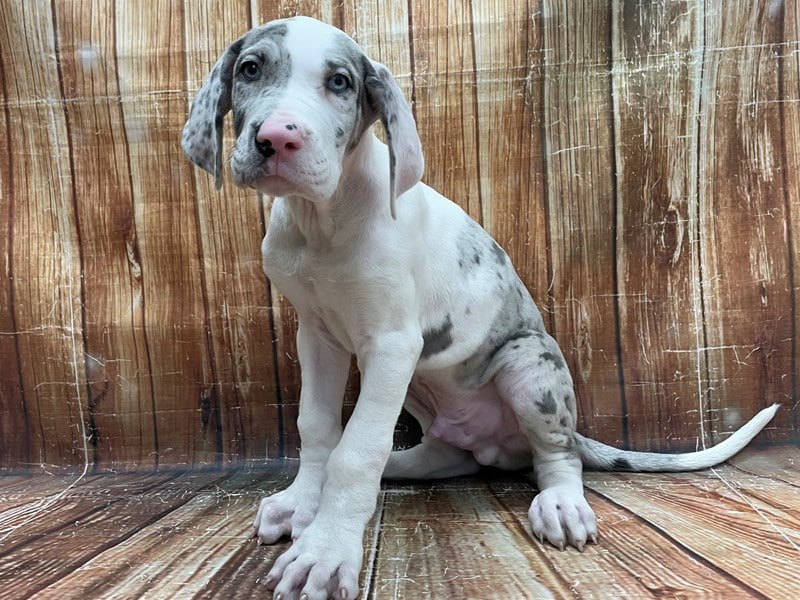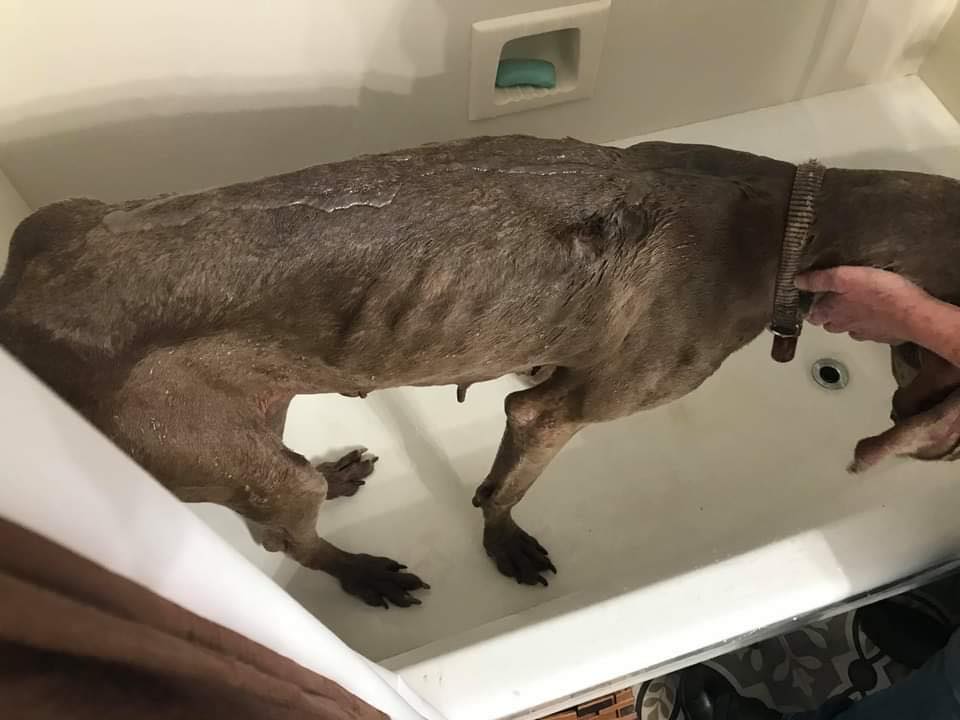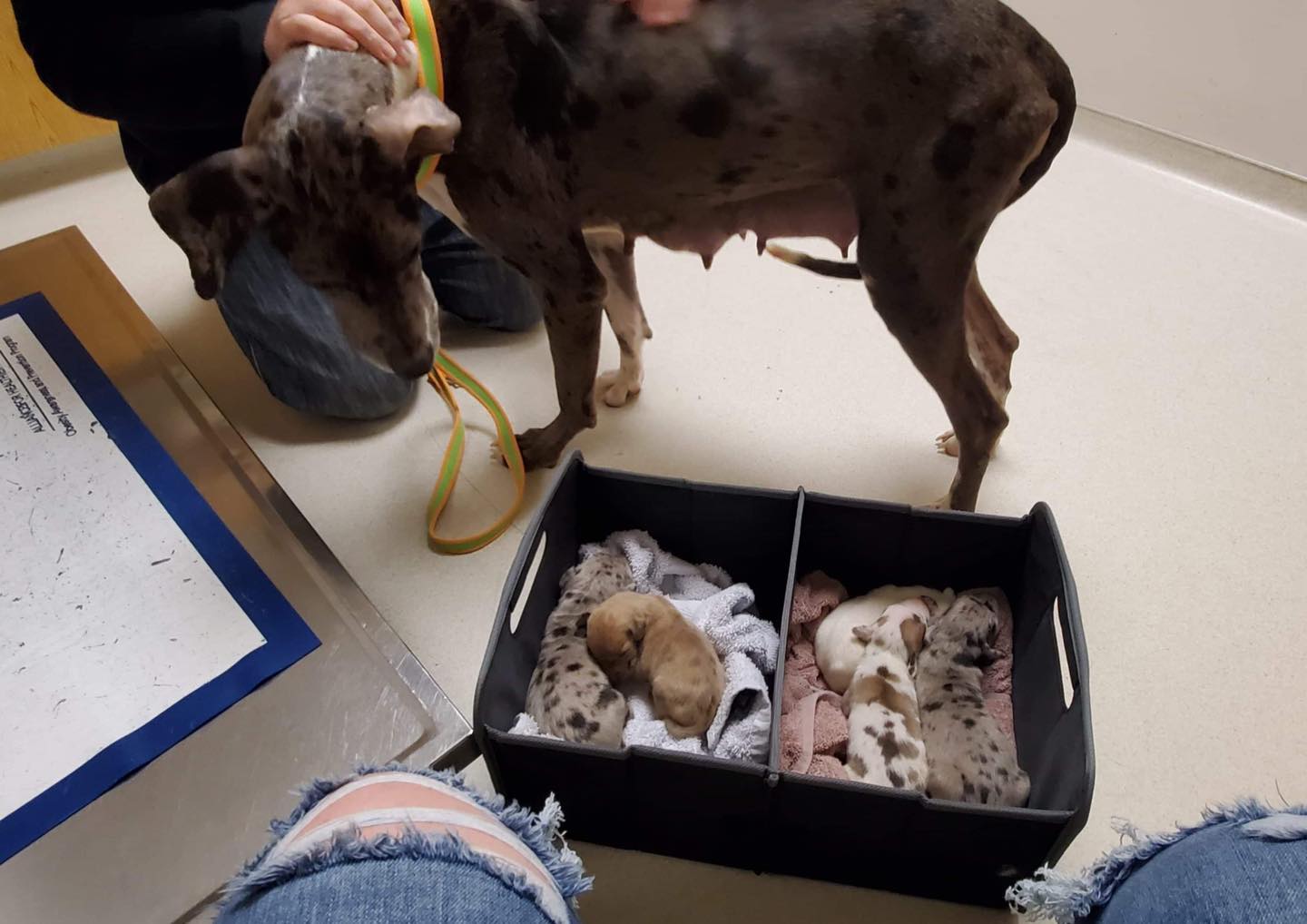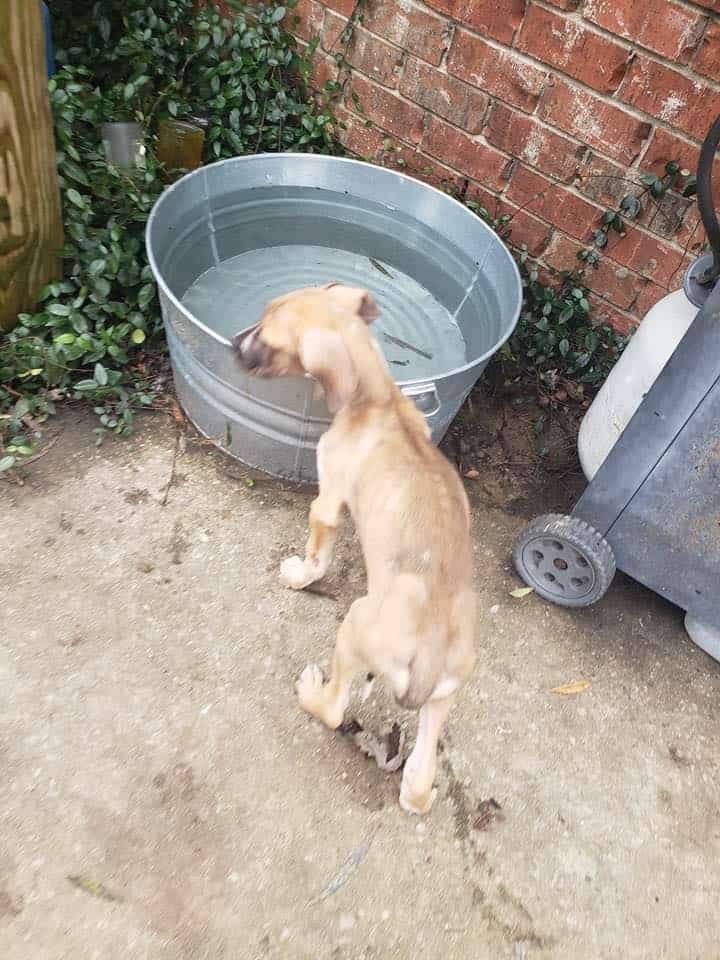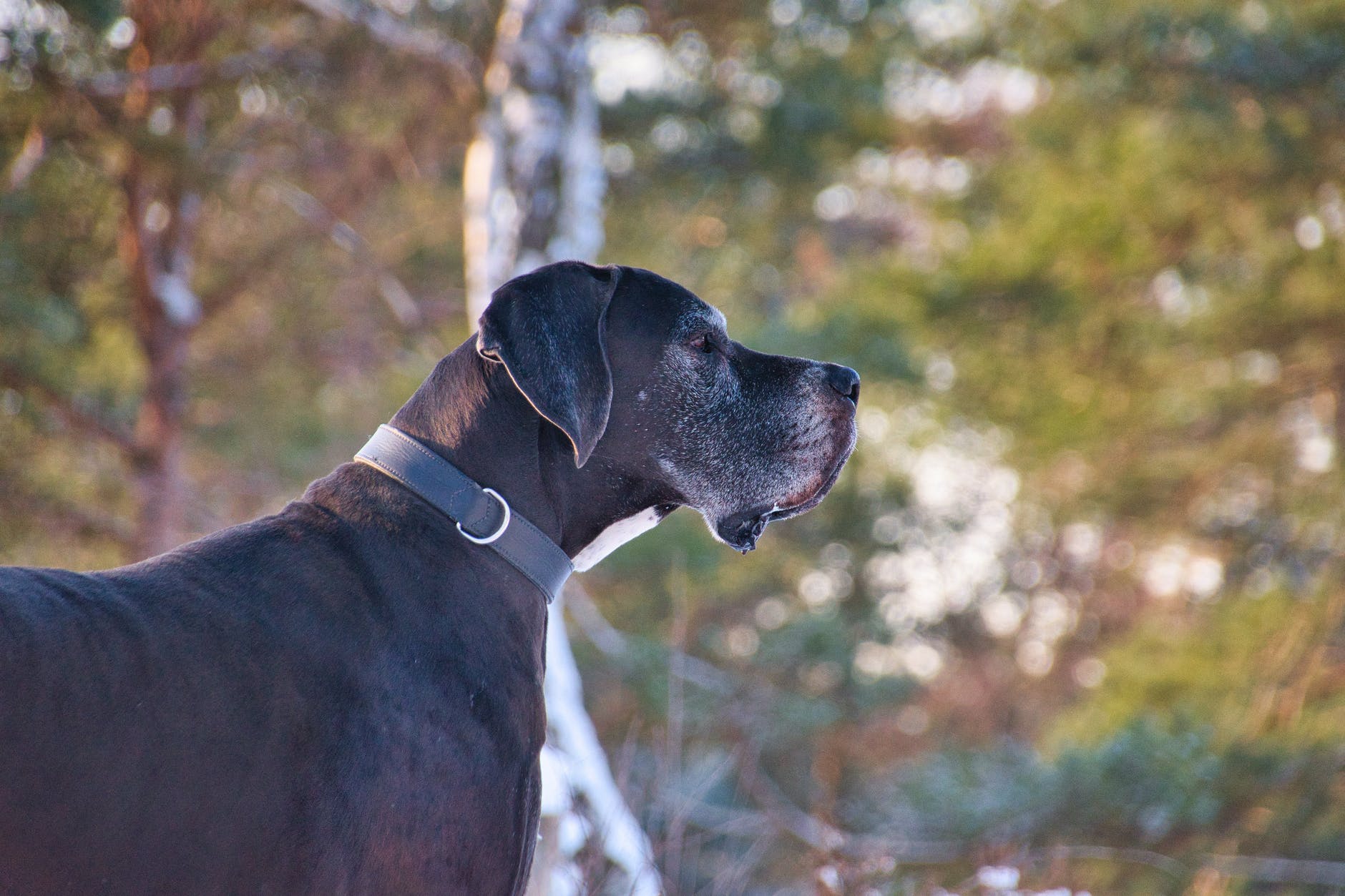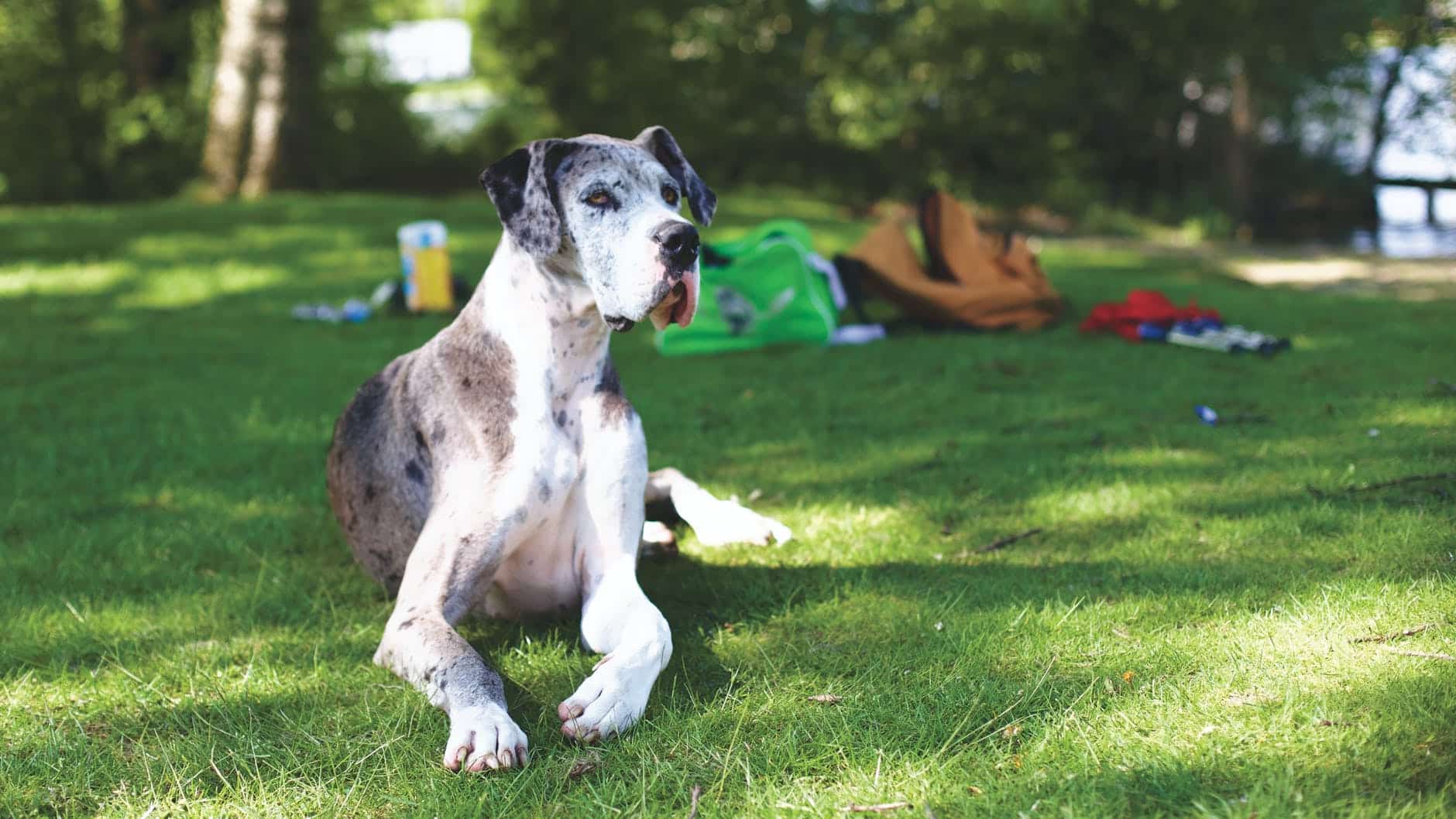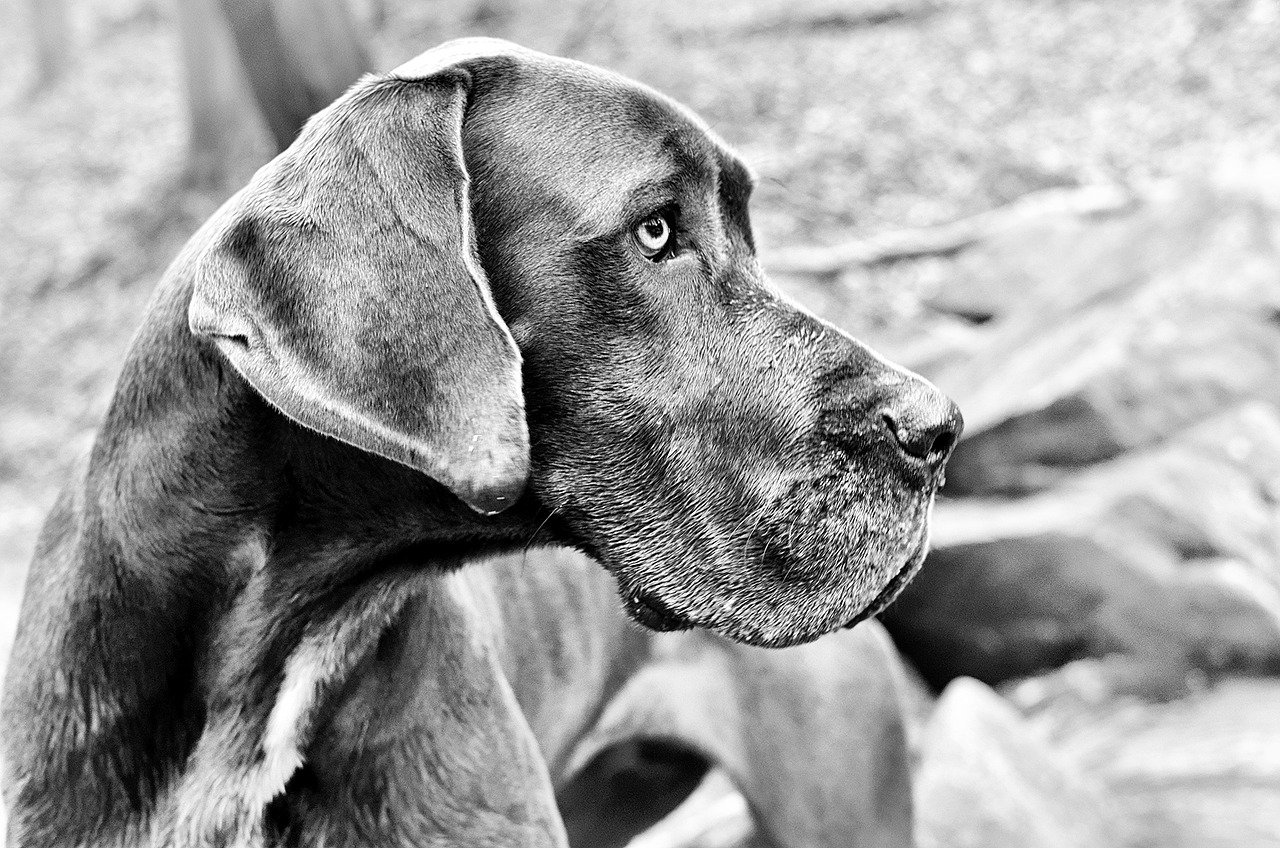Coming across a stray dog can stir up various emotions and uncertainties. You’re compelled to help, but you might not be sure where to start or what actions to take. If you’ve found yourself in this situation, this article is here to provide you with guidance on safely capturing the stray dog (feel free to skip ahead if you’ve already completed this step) and navigating the next steps.
This article will cover:
- How to capture a stray dog
- Contacting Animal Control and when to surrender the stray pet
- Finding the owners with microchip scanning and local resources
- Preventing dog bites and aggression
- Minimizing the chance of exposing your family and your pets to parasites and illness
- How to handle stray or abandoned dogs that are tied up
- Whether or not you can keep a stray dog if the owners are not found

How to Capture a Stray Dog that Doesn’t Want to Be Caught
Capturing a stray dog that is hesitant or unwilling to be caught requires patience, empathy, and strategic planning.
Start by creating a safe and inviting environment to entice the dog to approach. Try and lure the dog to you with canned dog food.
Humane traps (like this one) can be effective tools for capturing elusive strays. These traps are designed to safely and securely contain the dog without causing harm. If you don’t have one or don’t want to invest, contact your local animal control.
Place the trap in an area where the dog has been spotted, baiting it with enticing food such as wet dog food or meat. Monitor the trap from a distance, allowing the dog to enter and trigger the trap mechanism.
If getting a humane trap isn’t an option, consider a makeshift trap! Find a way to lure and then corner the dog into a smaller area. The space between a shed and a fence, for example, can work! Use steak to make that spot appealing, then stand by out of sight. Close it off as soon as the dog enters.
Approaching a Stray Dog
Approach the stray dog calmly, avoiding sudden movements. Speak gently and use non-threatening body language to help the dog feel safe and comfortable. Crouch and turn your body to the side whenever possible, and keep your hands and arms close to your body.
Do not make eye contact with the dog. Sigh, yawn, and turn your head away to show the dog you are not interested in harming them.
If you think you can catch the lost dog without a trap, a slip lead is your best friend.
You can use high-value treats or canned food to lure the dog close if needed. Remember, many stray dogs are skittish and may run into traffic to stay away from you. Don’t be afraid to call animal control if you cannot quickly and safely capture the dog.
Use a slip leash (like this one) or makeshift restraint to prevent the dog from running off or getting into danger. Keep in mind that even friendly dogs may become anxious or scared in unfamiliar surroundings, so handle the dog with care.
If the dog seems aggressive, don’t get close. Instead, call animal control.
(Pro Tip: I keep inexpensive slip leads in my car and around my home in case of emergencies).

Assessing the Condition of a Lost Dog
Start by assessing the dog’s condition, behavior, and surroundings to gauge the urgency of the situation. Take note of the dog’s appearance, behavior, and surroundings. Is the dog injured or in distress? Is it wearing a collar with identification tags? Does it seem aggressive or fearful?
If the dog appears to have large nipples, puppies may be nearby and are worth looking for as well.
Assessing these factors will help you determine the level of urgency and the best approach to take.
Check the Lost Dog For Identification
Look for a collar with identification tags.
If there are no tags or they’re illegible, you can try scanning the dog for a microchip using a microchip scanner. Many veterinary clinics, animal shelters, and animal control agencies offer this service for free. Call them first and let them know you have a stray dog.
Contact Animal Control or a Shelter
Reach out to your local animal control agency or shelter for assistance and guidance on what to do next. They can guide you and may be able to send someone to pick up the dog if you’re unable to keep it temporarily. Be prepared to describe the dog and its location, as well as any relevant information about its behavior and condition.
Provide Temporary Care, If You Can
If you’re unable to reach animal control or a shelter for advice, you may need (or want) to provide temporary care for the stray dog. This could include providing food and water, finding a safe place for it to rest, and keeping it away from hazards like busy roads or other animals.
Keep in mind that while you may have the best intentions, it’s important to prioritize your safety and the safety of others when caring for a stray dog.
I’ve included some information below on keeping your home safe from dog aggression, parasites, and diseases that may be introduced by dogs that have been on the run for a while.
Seek Veterinary Care
If the dog appears injured or ill, seek veterinary care as soon as possible to address any health issues. In some situations, you may be asked to pay the fees associated with this care. Many veterinary clinics offer discounted or subsidized services for stray animals, so don’t hesitate to reach out for help.
You can surrender the pet to a local rescue or shelter if you cannot afford to pay for the veterinary bills.
Pro Tip: When surrendering, mention that you are available and interested in fostering! This may make it so you can continue to care for the animal, while it gains access to the valuable resources (such as spaying and neutering, as well as vaccines) offered by local pet rescues.
Spread the Word to Find The Owners
If you choose not to surrender the animal to your local shelter, utilize social media, community bulletin boards, and other platforms to spread the word and help locate the dog’s owner.
Post pictures and descriptions of the dog on social media platforms, community bulletin boards, and lost pet websites. You can also contact local veterinarians, pet stores, and grooming salons to see if anyone recognizes the dog or has any information about its owner.

I Found a Stray Dog, Can I Keep It?
If efforts to locate the dog’s owner are unsuccessful or if the owner is unable to be found, you may consider adopting the stray dog yourself or helping to find it a new home.
Don’t immediately jump to keeping the pet, however. You must make reasonable efforts towards finding the original owner, first.
Before making this decision to keep a stray that you found, consider factors such as your ability to provide for the dog’s needs, your living situation, and any existing pets you may have. If adoption isn’t feasible for you, reach out to local animal rescue organizations or shelters to see if they can help find a permanent home for the dog.
Being Prepared for the Unexpected
Stay flexible and trust your instincts as you navigate the complexities of helping a stray dog in need. Remember that every situation is unique, and there’s no one-size-fits-all solution when it comes to helping a stray dog. Be prepared for the unexpected, and trust your instincts when it comes to assessing the dog’s needs and determining the best course of action.
Your efforts to help a stray dog in need can make a world of difference in its life and the lives of those around you.

Preventing Dog Bites, Disease, and Aggression with Other Pets
When interacting with a stray dog, it’s crucial to take precautions to prevent dog bites, the transmission of diseases, and potential conflicts with other pets in your home. Here are some tips to minimize risks:
- Approach with Caution: Always approach a stray dog slowly and calmly, allowing it to assess you and your intentions. Avoid making sudden movements or loud noises that could startle the dog and trigger defensive behavior.
- Maintain Distance: If the stray dog shows signs of aggression or fear, such as growling, baring teeth, or backing away, give it space and avoid attempting to touch or handle it. Respect the dog’s boundaries and avoid escalating the situation.
- Avoid Direct Eye Contact: Direct eye contact can be perceived as a threat by dogs, especially those that are fearful or defensive. Instead, avert your gaze and allow the dog to approach you on its terms.
- Offer Food and Water Safely: If you need to provide food and water to the stray dog, do so from a safe distance or use a long-handled utensil to avoid putting yourself at risk of being bitten. Place the food and water in a secure location where the dog can access it without feeling threatened.
- Wash Hands Thoroughly: After interacting with a stray dog, wash your hands thoroughly with soap and water to reduce the risk of transmitting any potential diseases or parasites to yourself or other pets in your home.
- Introduce Slowly to Other Pets: If you decide to bring a stray dog into your home, introduce it to your existing pets gradually and under controlled circumstances, only if the stray does not seem stressed, anxious, or aggressive. Keep them separated initially and supervise their interactions closely to prevent conflicts or aggression, if you do decide to introduce them. It’s best to keep stray dogs and your house pets completely apart until the veterinarian has treated the stray.
By taking these precautions, you can help ensure the safety and well-being of both yourself and the stray dog, while also minimizing the risk of negative interactions with other pets in your home.

What Should I Do If I Find a Dog That is Tied Up?
If you come across an abandoned animal that is tied up, it’s essential to approach the situation with caution and prioritize the safety of both yourself and the animal.
It’s very important first to assess if the tied-up dog is abandoned and not just tied out for some exercise. Many people tie their pets out for several reasons (such as fence jumping or aggression) and it’s not always a bad thing!
Before taking any action, consider property boundaries and the potential for trespassing. Ensure that you have permission to be on the property and that you are not putting yourself at risk of legal consequences.
If you are concerned about the property owner, contact the authorities!
If it’s safe to do so, provide the animal with food and water to alleviate hunger and thirst. You can use a stick to push a bowl of food or water towards them. Proceed slowly and speak softly to avoid startling the animal.
If the animal is tied up, the animal seems safe to approach, and you have the authority to do so, place a slip lead over the dog’s head and then carefully untie or free it from any restraints.
If you’re unable to safely intervene or if the situation requires immediate attention, contact your local animal control agency or animal shelter for assistance. Documenting the situation with photos or videos can be helpful for authorities in assessing the situation and taking appropriate action.
Additionally, consider raising awareness about the issue of animal abandonment in your community to promote responsible pet ownership and support for animals in need.

What Should I Do With Abandoned Puppies?
It is not uncommon for people to abandon young puppies when they realize how much work they are, when they cannot find homes for them, or when the mother rejects them.
This unfortunate situation is heartbreaking and requires a lot of care. Here are some key considerations:
- Puppies have parasites such as hookworms and roundworms, which they may transmit to other animals. It’s crucial to keep them away from other pets until they have undergone thorough veterinary evaluation and deworming to prevent the spread of parasites.
- Young puppies may need milk, especially if there is any chance they are under 6 weeks of age. You may need to contact a local rescue or veterinarian for guidance. They can become dehydrated very quickly.
- Be Parvo Aware! Parvo is a deadly disease that is extremely serious and unfortunately common in young pups, especially if they haven’t been vaccinated. See a veterinarian immediately if the puppies appear sick in any way. If your pets aren’t up to date on their vaccines and parasite prevention, don’t bring the puppies into your home or yard.
- They poop a lot and must be kept warm. If you think you’re going to put the cute puppies into a room in your house and care for them, think again. Young pups are messy with food and poop (which again, may contain parasites). They also need to be kept warm, especially if they seem very young. If you are not prepared for those scenarios, contact a dog rescue ASAP.
- See a veterinarian, ASAP. Young abandoned pups must be seen by a veterinarian as soon as possible. This can be accomplished at your expense, or by working with a rescue and volunteering to foster the puppies.
- Keep them until 8 weeks of age, minimum. No matter how noisy, bitey, or messy they are, they must stay together until 8 weeks of age. If you work with a rescue, they will help you find appropriate homes.
Here is a bare minimum list of “must-have” puppy supplies for raising a litter of abandoned puppies:
- X-pen (containment)
- Puppy pads
- Heating pad
- Heating lamps
- Royal Canin Babydog Milk
- Puppy nipples and bottles
- Royal Canin Starter Puppy Mush(ask your vet for specific formulas)
- Millers Forge Nail Trimmers
- Enrichment toys as they grow, such as TOPPL and Chewers
- Puppy-safe shampoo (they will get very messy)
- Pet-safe sanitizer (to kill bacteria and parasites left on surfaces)

Can I Keep a Stray Dog That I Found?
Keeping a stray dog that you found is a decision that requires careful consideration and adherence to legal and ethical guidelines. Here are some factors to consider:
- Ownership: In many places, stray animals are considered the property of their owner, even if they are lost or abandoned. Before deciding to keep a stray dog, make reasonable efforts to locate its owner by checking for identification tags, scanning for a microchip, and posting lost pet notices in the area where you found the dog.
- Legal Considerations: It’s essential to familiarize yourself with local laws and regulations regarding stray animals and pet ownership. Some areas have specific procedures for handling stray animals, including reporting them to animal control or surrendering them to a shelter.
- Health and Safety: Prioritize the health and safety of both the dog and your household. Ensure the dog receives necessary veterinary care, including vaccinations, spaying or neutering, and treatment for any existing medical conditions. Consider whether your home environment is suitable for a new pet and whether you have the time, resources, and commitment to provide for the dog’s needs.
- Behavioral Assessment: Assess the dog’s behavior and temperament to determine its compatibility with your household and lifestyle. Some stray dogs may have behavioral issues or require additional training and socialization to adapt to life as a pet.
- Rehoming Options: If you’re unable to locate the dog’s owner or if keeping the dog is not feasible for you, consider exploring rehoming options through local animal rescue organizations or shelters. These organizations can help find a suitable permanent home for the dog.
Ultimately, the decision to keep a stray dog should be made thoughtfully and responsibly, taking into account the best interests of the dog and your ability to provide a loving and stable home. If you’re unsure about what to do, consider seeking guidance from animal welfare professionals or local authorities.

